4 European Stocks to Buy Now
The economic news from the Continent is dreary. But some multinationals look compelling.

Choosing European stocks over U.S. stocks the past few years has meant living in constant hope—and suffering constant disappointment. Americans were much better off staying home.
Since the end of 2010, Standard & Poor’s 500-stock index has returned 73%, far exceeding the 38% gain of the MSCI Europe index. Making things worse for U.S. investors, the euro has declined against the dollar, further sapping the MSCI Europe’s return.
But the disparity in performance just boosts Europe’s allure for some value-hunting investors, who say the region’s stocks are relative bargains in a world of pricey assets. “Europe is filled with great companies,” says Dean Tenerelli, the London-based manager of T. Rowe Price European Stock, a $1.8 billion fund that holds stakes in big companies such as food titan Nestlé (NSRGY) and drug maker Novartis (NVS). He concedes, though, that it’s tough for many investors to get past the gloomy headlines.

Sign up for Kiplinger’s Free E-Newsletters
Profit and prosper with the best of expert advice on investing, taxes, retirement, personal finance and more - straight to your e-mail.
Profit and prosper with the best of expert advice - straight to your e-mail.
Start with the economy. After reviving modestly in 2013, Europe is again struggling amid government austerity measures, a still-hobbled banking system and the threat of economic fallout from the conflict between Russia and Ukraine. In the second quarter, the 18 nations that share the euro currency showed no growth, on average, from the first quarter. The European economy has been so anemic that it runs the risk of a Japanese-style deflation, meaning a debilitating spiral of falling prices and wages.
More help. The economy’s troubles have put renewed pressure on the European Central Bank to provide additional monetary stimulus. The ECB launched new programs in September to try to funnel more money into the euro zone economies, and ECB president Mario Draghi has hinted that the bank could go further. “The expectation out there is that the ECB can do something more,” says Don Rissmiller, chief economist at Strategas Research Partners, an investment firm in New York City. “But this time, it has to work.”
More financial stimulus from the ECB could, however, further devalue the euro, which would hurt U.S. investors. The euro has lost 5.8% against the dollar this year, to a recent $1.30. The drop makes sense given the weakness of Europe’s economies. A sliding euro could help European-based multinational firms better compete with U.S. rivals, because prices of European goods and services get cheaper in dollars as the euro falls.
But the declining euro also hurts U.S. investors holding European stocks, because the value of the securities drops when they’re translated from euros to dollars. So far this year, for example, Germany’s main stock index, the DAX, gained 2% in euros but was down 4% in dollars (all prices and returns are through September 5).
So with all that, why bother looking across the Atlantic? “We see big discrepancies in share prices versus companies’ intrinsic value,” says Rob Taylor, comanager of Oakmark Global fund. The fund, which can invest worldwide, hunts for stocks that Oakmark believes should rise at least 30% to reflect the underlying company’s true value. Taylor and his analysts have found enough candidates in Europe that the fund at midyear had more than one-third of its $3.7 billion in assets in shares of companies in developed European countries (including the United Kingdom). That was a bit more than the average global fund’s 31% stake in European stocks, according to Morningstar.
Oakmark Global’s second-largest holding is Credit Suisse Group (CS). Although many investors still shun banks in the aftermath of the 2008 crash, Taylor thinks Credit Suisse’s rebuilt capital base and focus on private and investment banking will translate into healthy long-term profit growth. And with CS’s American depositary shares trading at $28, “you’re paying less than 10 times estimated 2015 earnings for the business.” (Many foreign stocks trade in the U.S. as ADSs or as the similar American depositary receipts.)
For investors who prefer a name they know, Nestlé (NSRGY) is a classic growth story that’s worth a look. The Swiss company is the world’s largest food processor, with brands including Lean Cuisine, Gerber and Alpo. It’s expected to earn $3.90 per ADR this year, rising 12%, to $4.35, in 2015, says Andrew Wood, an analyst at AllianceBernstein in London. He recommends the stock in part based on Nestlé’s huge presence in the developing world, which already accounts for 45% of sales. Growth in emerging nations has helped Nestlé’s stock, now $77, more than quadruple over the past 10 years.
For income-seeking investors, many European stocks offer rich dividend yields—in many cases north of 3%, compared with an average of 2% for S&P 500 stocks. Dividend generosity “says that management has discipline about the company’s capital and an awareness of shareholders,” says T. Rowe Price’s Tenerelli. His second-biggest holding is the British–Dutch energy giant Royal Dutch Shell (RDS.B), whose Class B shares, at $84, yield 4.5%. Shares of two big U.S. rivals, ExxonMobil and Chevron, yield 2.8% and 3.4%, respectively.
(One caution on foreign dividends: Some countries withhold taxes on dividends paid to foreigners. The IRS allows you to claim a credit on foreign taxes paid, but that’s no help if you own foreign stocks in tax-deferred accounts, such as an IRA. Check with your tax adviser before buying any foreign security for income.)
Royal Dutch is a favorite big-energy-company pick of brokerage Barclays Capital. With rising production from its wells in the Gulf of Mexico and a new focus on controlling costs, the oil-and-gas company can currently cover both capital-spending requirements and dividend payments solely from the cash that the business generates, Barclays says. That leaves “significant room” to further reward shareholders via dividend hikes and share buybacks, Barclays says.
The potential for steady dividend increases figures prominently in the appeal of London-based Rio Tinto (RIO), one of the world’s biggest mining firms, particularly for iron ore. The company has slashed costs as demand for many commodities weakened over the past year. The result was a surprising 21% jump in profits from its core businesses in the first half of this year. At $53, Rio Tinto’s ADRs yield 3.8%, and analysts at brokerage Canaccord Genuity in London say the company has the wherewithal to hike its payouts substantially. Rio “is now moving toward the happy position of having surplus cash,” Canaccord says. And if commodity prices pick up, that would be gravy for Rio—and its shareholders.
Get Kiplinger Today newsletter — free
Profit and prosper with the best of Kiplinger's advice on investing, taxes, retirement, personal finance and much more. Delivered daily. Enter your email in the box and click Sign Me Up.

-
 RMD Deadline April 1: Five Tax Strategies to Manage Your 2025 Income
RMD Deadline April 1: Five Tax Strategies to Manage Your 2025 IncomeTaxable Income The April 1, 2025, deadline for required minimum distributions (RMDs) is fast approaching for retirees who turned 73 in 2024.
By Kelley R. Taylor Published
-
 Rising AI Demand Stokes Undersea Investments
Rising AI Demand Stokes Undersea InvestmentsThe Kiplinger Letter As demand soars for AI, there’s a need to transport huge amounts of data across oceans. Tech giants have big plans for new submarine cables, including the longest ever.
By John Miley Published
-
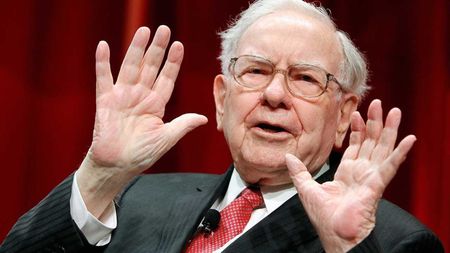 Why Is Warren Buffett Selling So Much Stock?
Why Is Warren Buffett Selling So Much Stock?Berkshire Hathaway is dumping equities, hoarding cash and making market participants nervous.
By Dan Burrows Published
-
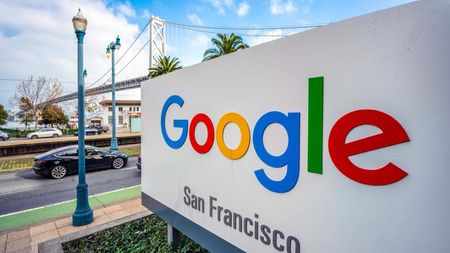 If You'd Put $1,000 Into Google Stock 20 Years Ago, Here's What You'd Have Today
If You'd Put $1,000 Into Google Stock 20 Years Ago, Here's What You'd Have TodayGoogle parent Alphabet has been a market-beating machine for ages.
By Dan Burrows Last updated
-
 Stock Market Today: Stocks Retreat Ahead of Nvidia Earnings
Stock Market Today: Stocks Retreat Ahead of Nvidia EarningsMarkets lost ground on light volume Wednesday as traders keyed on AI bellwether Nvidia earnings after the close.
By Dan Burrows Published
-
 Stock Market Today: Stocks Edge Higher With Nvidia Earnings in Focus
Stock Market Today: Stocks Edge Higher With Nvidia Earnings in FocusNvidia stock gained ground ahead of tomorrow's after-the-close earnings event, while Super Micro Computer got hit by a short seller report.
By Karee Venema Published
-
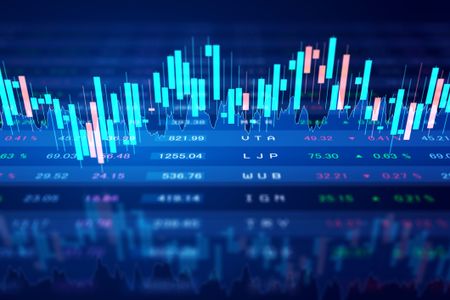 Stock Market Today: Dow Hits New Record Closing High
Stock Market Today: Dow Hits New Record Closing HighThe Nasdaq Composite and S&P 500 finished in the red as semiconductor stocks struggled.
By Karee Venema Published
-
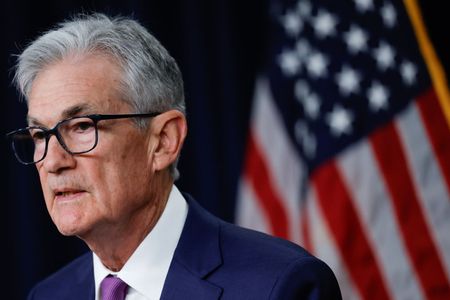 Stock Market Today: Stocks Pop After Powell's Jackson Hole Speech
Stock Market Today: Stocks Pop After Powell's Jackson Hole SpeechFed Chair Powell's Jackson Hole speech struck a dovish tone which sent stocks soaring Friday.
By Karee Venema Published
-
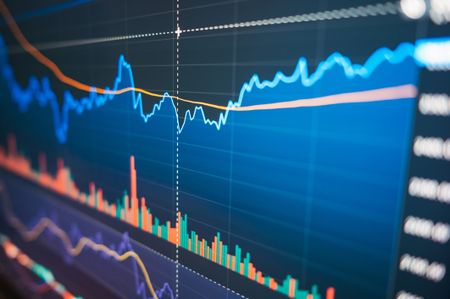 Stock Market Today: Stocks Drop Ahead of Powell's Jackson Hole Speech
Stock Market Today: Stocks Drop Ahead of Powell's Jackson Hole SpeechSentiment turned cautious ahead of Fed Chair Powell's highly anticipated speech Friday at the Jackson Hole Economic Symposium.
By Karee Venema Published
-
 Stock Market Today: Stocks Rise After Jobs Data Lifts Rate-Cut Odds
Stock Market Today: Stocks Rise After Jobs Data Lifts Rate-Cut OddsPreliminary data from the Bureau of Labor Statistics shows job growth was lower than previously estimated.
By Karee Venema Published